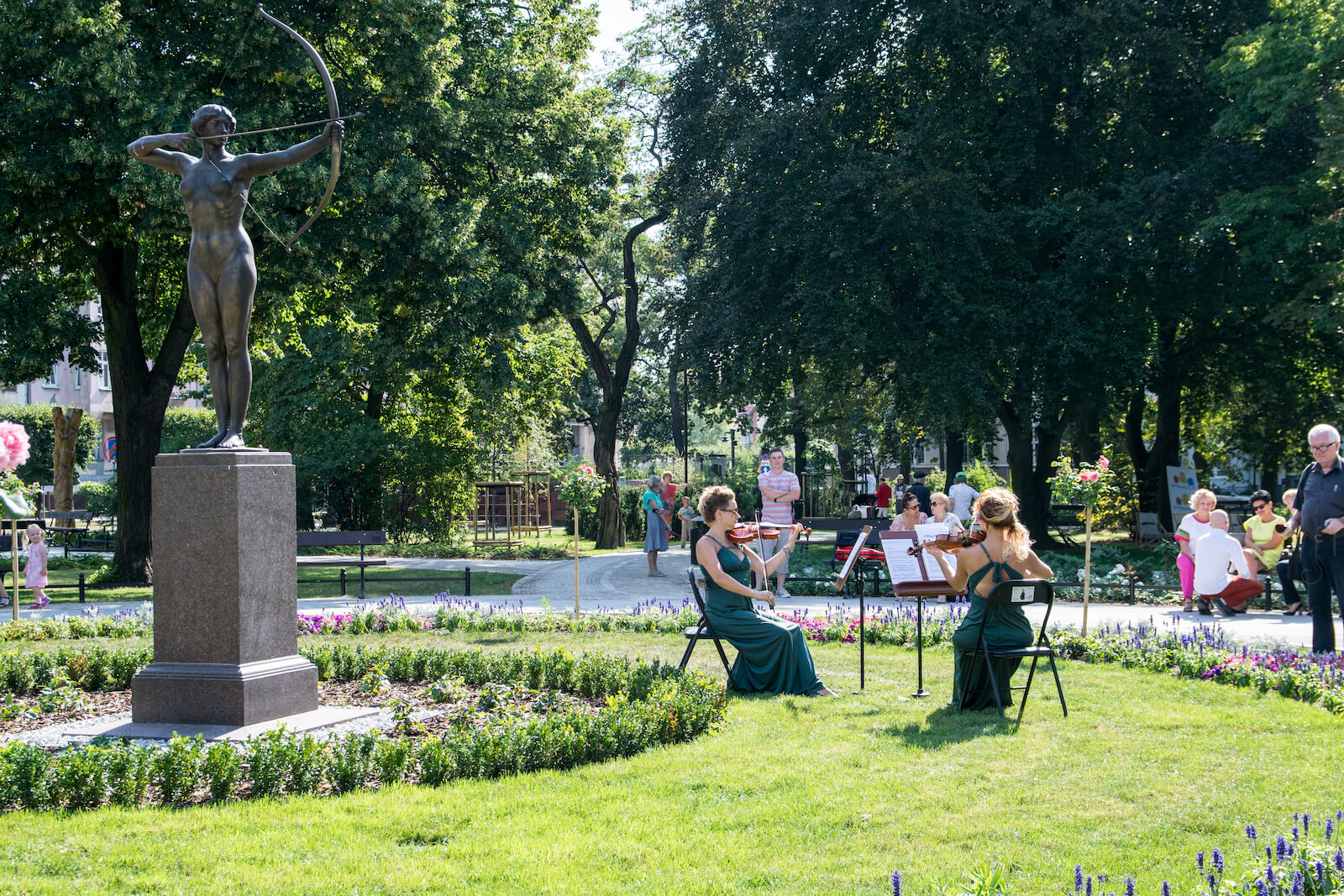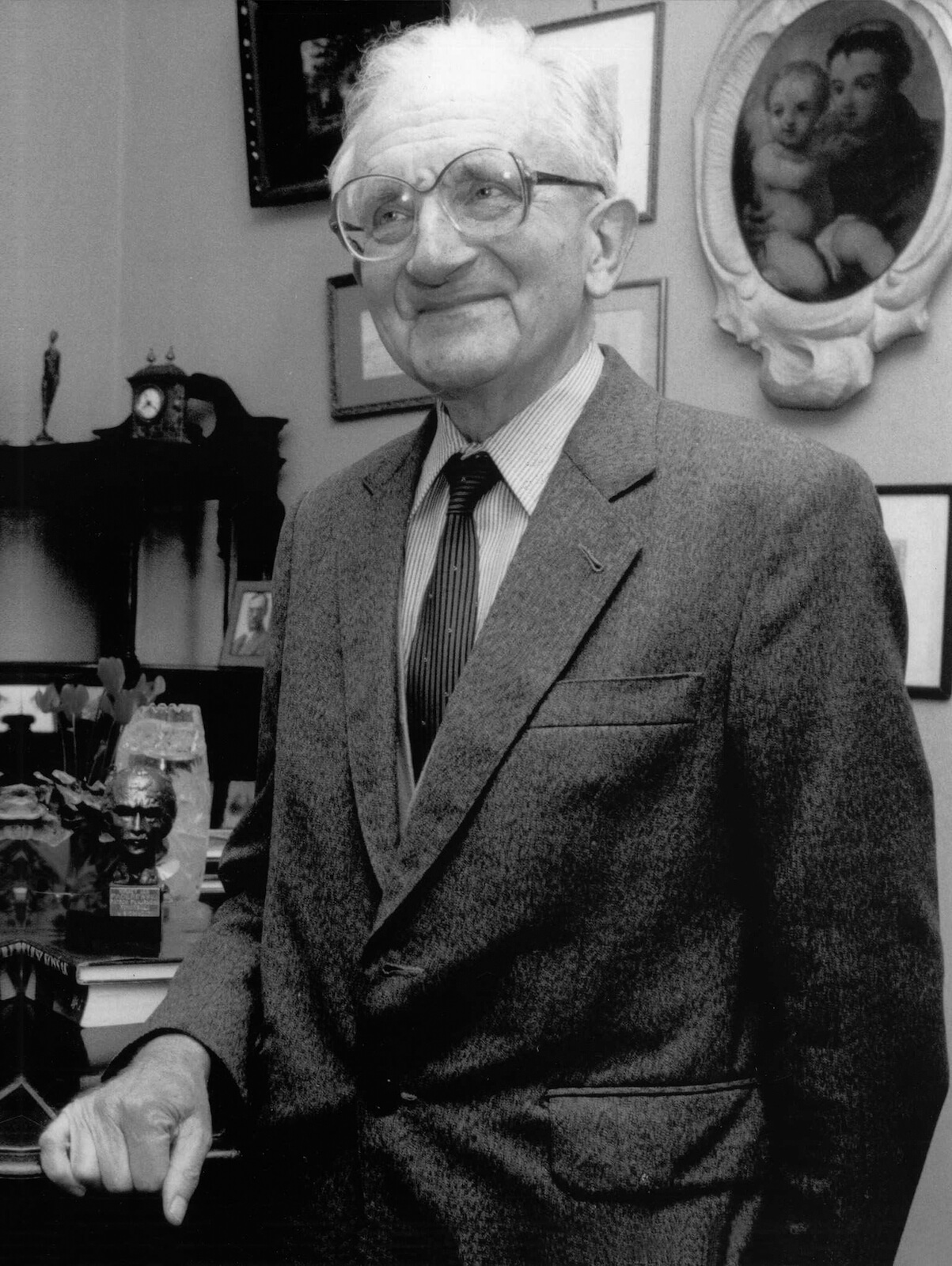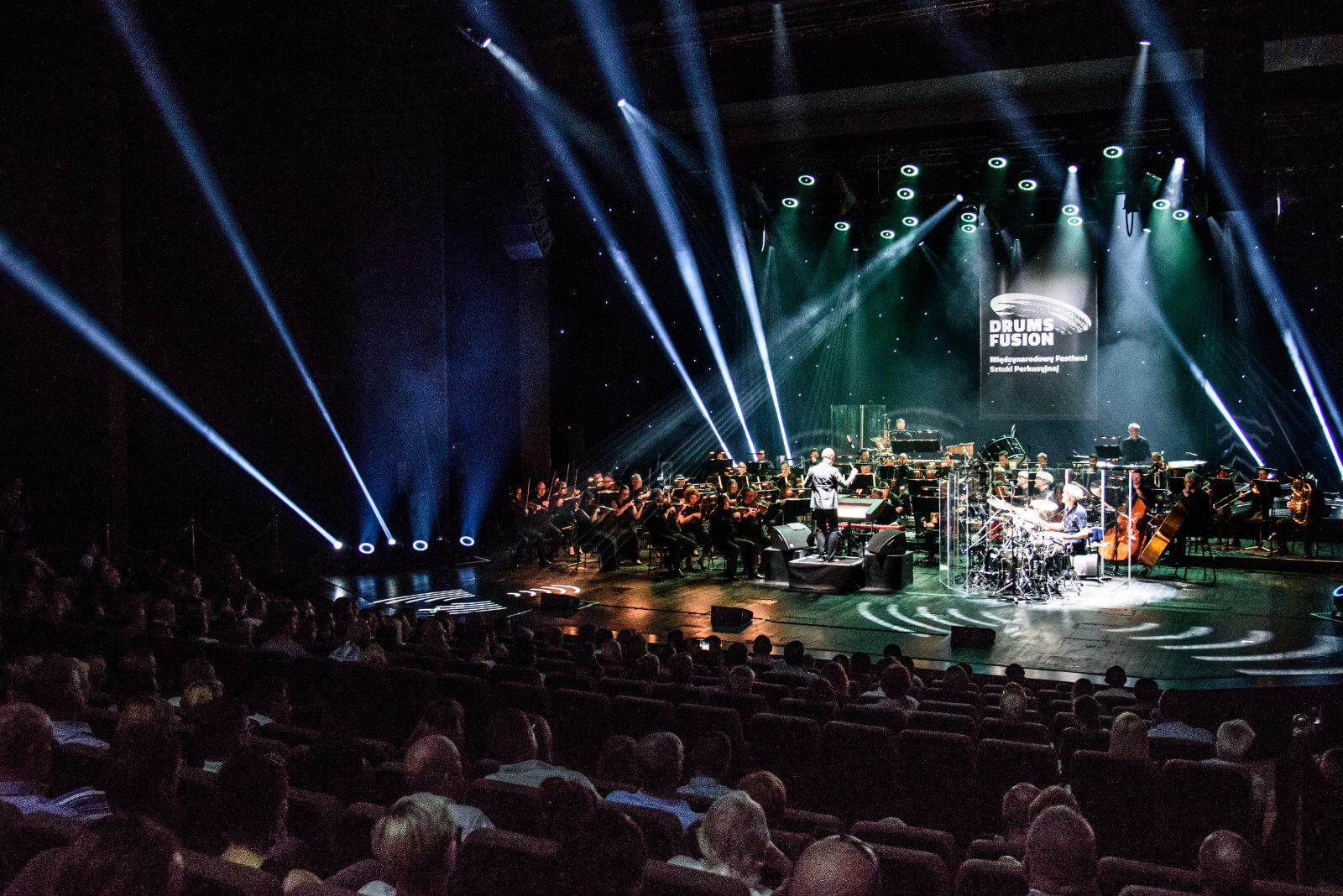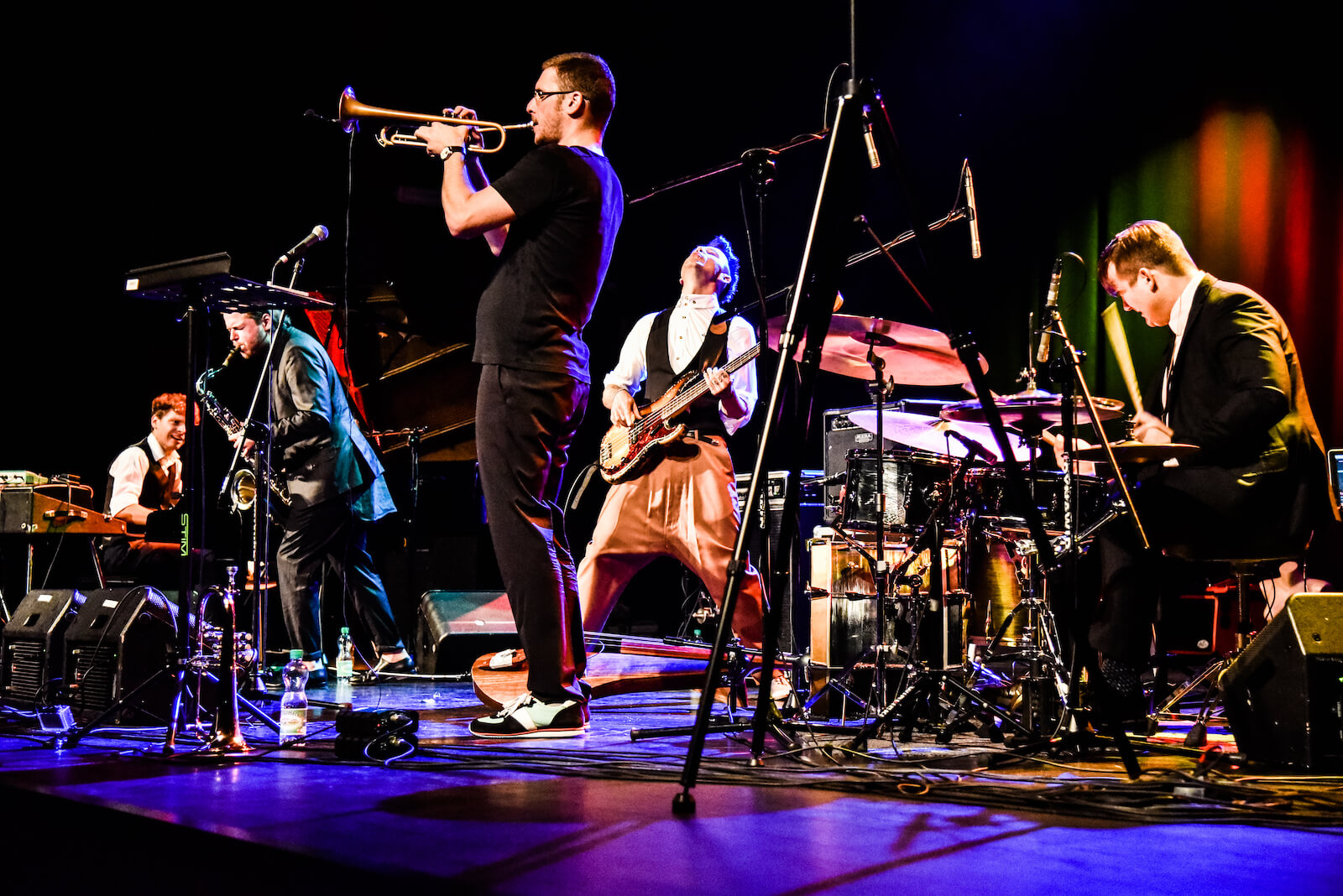Music in Bydgoszcz
Bydgoszcz ranks among the largest Polish cities. It is located at the meeting point of five regions, each of them with diverse culture and history. The city has always been ambiguous and therefore intriguing and attractive.
and phonography sector
operate in Bydgoszcz.
The Brda River lies at its heart and life seems to revolve around water. That is the way it has always been here. The river used to give work to those toiling on barges, it used to drive industrial development, and as a tributary of the Vistula River that also crosses Bydgoszcz, it used to link the city with other places in Poland and Europe.
Now, when the time of the industrial heyday is nothing but a memory, the river still shapes the life of the city. Yet it is not industry that drives all the changes but culture. Thanks to the perfect duo of culture and water Bydgoszcz has been undergoing specular changes.
Guinness
World
Record
the largest drum in the world
In 2022 (May 28), during the DRUMS FUSION International Festival of Rhythm and Percussion Art, another record was set - this time in Poland, in the category of "the most people playing recycled instruments". This record was broken in 2023 also during DRUMS FUSION - this time as many as 1080 people played recycled drums.
In this dynamically growing city industrial heritage serves as a platform for cultural development and culture itself has become the driving force behind changes in urban-planning, social and economic live and cultural events. The varied cultural offer, intensiveness of music life and the infrastructure created with a view to serving both the inhabitants and the artists, coupled with promotion of musical legacy, all these factors have turned Bydgoszcz into the cultural leader of the region.
Festivals

Annually, Bydgoszcz offers nearly 100 festivals, reviews and cyclical events, many of which revolve around culture.
The most important festivals include:
The Bydgoszcz Opera Festival – an international and also the largest in Poland review of various musical genres ranging from opera, operetta to musical and ballet.
The Bydgoszcz Music Festival – an international festival organized by the I.J. Paderewski Philharmonic Hall. It has been staging classical music, both early and contemporary since 1963.
The International DRUMS FUSION Festival – the largest and the only festival in Poland dedicated entirely to percussion instruments and percussion virtuosos. Thanks to this festival Bydgoszcz has its entry in the Guinness World Record Book - in 2016 during the 10th edition a record was set in playing the world largest drum. There are also two Polish records broken (2022 and 2023) in the category of "the most people playing recycled instruments". DRUMS FUSION was the first festival in Bydgoszcz to introduce an ecological, reusable festival mug.
The International Contemporary Music and Visual Arts Festival Mózg - a multicultural event for artists interested in all contemporary music genres, performance, audio and video installations, in which music plays an underlying role.
The I.J. Paderewski International Piano Competition and A. Rubinstein International Piano Competition.
There is no shortage of jazz music festivals in Bydgoszcz: the most important are Bydgoszcz Jazz Festival and Bydgoszcz Jazz Academy (project by The Feliks Nowowiejski Academy of Music and Municipal Cultural Center in Bydgoszcz). Since 2013, within the frames of BJA, the academic teachers - well-known and respected masters of instruments - are presented, as well as the effects of their work with talented students, achieving remarkable results under their supervision.
The Chamber Music Festival “Muzyka u Źródeł” as well as the Bydgoszcz Baroque Scene, featuring both more traditional and up-to-date arrangements of baroque music rank among some of the most interesting initiatives. Also, the Fonomo Music & Film Festival devised an original formula combining film, music, image and sound. The Municipal Centre of Culture in Bydgoszcz features every year a several dozen of various music events, among many other, the Folk and Traditional Music Festival Ethniesy.
Nature is the new culture

Bydgoszcz is the city that cares deeply about climate protection and therefore pro-ecological solutions have always been of prime importance here. The undertaken investments rely on renewable energy sources, including photovoltaic panels, an Olympic–size swimming pool Astoria is one of them. Municipal buildings such as nurseries, kindergartens or sports facility also tap energy from the sun.
Culture and music in particular, have always put at the forefront the idea of sustainable development and climate protection. The Municipal Centre of Culture has taken the lead in combining music and ecology.
The Centre has launched a myriad of initiatives promoting ecological lifestyle such as Children’s Recycling Orchestra, which under the guidance of a percussionist Jacek Kwaśniak plays percussion instruments made from waste materials. The summer of 2021 has been marked by the concept of the Green Zones of Culture designed by the Centre. The cultural events held in the zones provide also an occasion to promote sustainable growth and ecology, for instance the concerts of the Big Bike Orchestra - a six-member band that plays music while riding a six-person bike, workshops on creating instruments from waste materials or competitions for children.
The flagship project of the Municipal Centre is the Spring of Festivals, i.e. four large-scale events in spring that also bring to attention the issue of environmental protection. The highlights of the Spring of Festivals include:
The International DRUMS FUSION Festival – the largest event devoted to percussion music in Poland. Such renown artists as Dave Lombardo, Cindy Blackman Santana, Jan Garbarek or Apocalyptica were its guests. The festival also features the International Percussion Forum with workshops both for percussion professionals and enthusiasts held by world-famous musicians. Since 2021 DRUMS FUSION has definitely got into ecological rhythm – green lifestyle and nature protection have set the tone for its whole program. Music events combined with ecological workshops, performances of Children’s Recycling Orchestra (playing self-made instruments from waste materials), BIG BIKE ORCHESTRA concerts, promoting the bike as the best means of transport, these are just some of the highlights that were held all over the city and established the network of Green Zones of Culture.
The Folk and Traditional Music Festival Ethniesy - one of the largest events in Poland devoted to various strands of folk music. Yet, it is not only music that comes to play here since the primeval power of sound serves to uncover the world devoid of all glitter and hype. Ethniesy affirms life, turns to the roots, tradition and the rhythms of nature. In 2021 the festival adopted the creed “NATURE IS THE NEW CULTURE”.
Music education

The Feliks Nowowiejski Music Academy, the only institution of this type in the whole region, operates in Bydgoszcz. Since 1974, in the present form since 1981, it has been educating instrumentalists, vocalists, conductors, composers, music theorists, teachers, sound engineers, arrangers and culture animators.
It is worth noting some of the outstanding graduates of the Academy included such piano virtuosos as Rafał Blechacz, the winner of the 15th Fryderyk Chopin Piano Competition, Paweł Wakarecy, the finalist of the 16th edition of this competition, Krzysztof Książek, the laureate of the second prize at the Polish Fryderyk Chopin Competition in 2015 or Krzysztof Herdzin, one of the most renown pianists, composers and jazz musicians in Poland. The Music Academy attracts students thanks to its outstanding teaching staff, including Katarzyna Popowa-Zydroń (piano), Piotr Biskupski (percussion) or Rafał Blechacz.
Moreover, the A. Rubinstein State Music School Complex operates here and the educational offer is enriched by some private schools and classes held by other cultural institutions such as the Municipal Center of Culture, the Youth Centre Pałac Młodzieży, youth cultural centers and Integrational Music University for Children. Also, the Philharmonic Hall offers some classes aimed at pregnant women, infants and babies “Od brzuszka do uszka maluszka”, as well as the Stage of the Young (Estrada Młodych) and the ABC of Music (Muzyczne ABC).
Bydgoszcz boasts 25 concert halls, two symphony orchestras, chamber music orchestra, seven school orchestras and 40 amateur choirs. There are as many as 18 recording studios in the city.
District of music – the garden city where music plays the main role

The Music District is thought to be a true jewel in the landscape of the city, both in terms of its architecture and music connotations. The urban plan for the district was drawn up at the turn of the 19th and 20th centuries and related to the concept of “a garden city” created by Ebenezer Howard, in which dispersed buildings removed from the city center coalesced with lush vegetation.
The Music District is located in the eastern part of the city center – and various cultural institutions have been placed there, in particular those devoted to music: The Pomeranian Philharmonic Hall, the Academy of Music, the Complex of State Music Schools, the H. Konieczka Polish Theatre, the Polish Radio of Pomerania and Kuyavy. The Jan Kochanowski Park is the focal point of the district and there one can admire the monuments of classical music composers as well as the sculpture of Łuczniczka, the symbol of Bydgoszcz. The site is surrounded by beautiful pre-war tenement houses, some of them in Bydgoszcz specific Art Nouveau style. A truly desirable addition to this part of the city is a multimedia fountain, which with its interplay of light and sound attracts the crowds during evening performances.
Andrzej Szwalbe and his pianos

Not only is there a street named after Andrzej Szwalbe in Bydgoszcz, but also his monument can be found here. Moreover, he was given the title of the Honorary Citizen and is the patron of a collection of historical grand pianos in Ostromecko. Andrzej Szwalbe is the person who has left an indelible mark on the musical landscape of Bydgoszcz. It was thanks to his endeavors that in 1953 the Philharmonic Hall was erected in Bydgoszcz. In the following years he channeled his energy into various culture-related initiatives – he originated the idea of building the Musical Theatre, engaged passionately into the construction of the Opera Nova, laid a foundation for a research station affiliated to the Institute of Musicology of the Warsaw University, founded the Capella Bydgostiensis Pro Musica Antiqua – one of the leading Polish chamber Musis orchestras specializing in early music.
The year 2023 has been established as the Bydgoszcz Year of Andrzej Szwalbe. The inauguration of this event took place at the Palaces in Ostromecko. For twelve months, the cultural institutions and cultural circles of Bydgoszcz, through various projects and events, remind about Szwalbe, his achievements and extraordinary achievements for the city and residents. There were, among others concerts, Matura z Szwalbe, and in the Old Palace in Ostromecko, "Andrzej Szwalbe's Cabinet" was re-arranged. An important element of the new arrangement is the exhibition of selected works from the Collection of Contemporary Polish Painting and Graphic Art. Tadeusz Brzozowski, which in the past adorned these palace interiors.
Thanks to his effort the Palaces and Park Complex in Ostromecko boasts a sizeable Collection of Historical Pianos. The collection was started in 1970 to give guidance and instruction to the students of the Academy discovering the history of the instrument. Working together with Dr Beniamin Vogl, Szwalbe amassed a unique collection of instruments dating chiefly from the 19th and early 20th centuries. There are only three collections of this type in Poland that feature almost all types of pianos.
The Palaces and Park Complex in Ostromecko serves as a perfect example of a creative application of industrial and cultural heritage of Bydgoszcz, with particular emphasis on music. Apart from the Historical Piano Collection, the Complex also features the Sommerfeld Warehouse – with instruments manufactured in the factories in Bydgoszcz, including the Sommerfeld factory, which in the interwar period used to be the largest piano and grand piano producer in Poland. Bruno Sommerfeld built a worldwide career selling children pianos Baby Grand to England, Holland, France, Argentine, Palestine and Ceylon. The Sommerfeld Warehouse also features wind instruments as well as an sizeable collection of accordions produced by the Bydgoszcz Accordion Factory. An extreme rarity, the Carmen accordion with the serial number 0001 is on display there.
It is worth noting that in the Old Palace in Ostromecko artists residence programs, aimed particularly at local artists, are held. Grzegorz Pleszyński, a painter, and Małgorzata Grossman, a writer, were the beneficiaries of this initiative.
Culture in factories

The river used to be the chief driving force behind Bydgoszcz development. Not only did the flowing water power the mills’ wheels grinding grain but also accelerated the development of the whole city. Yet with the end of the industrial era Bydgoszcz did not come to a standstill. On the contrary – this post-industrial heritage contributed to developing a new infrastructure – this time the cultural infrastructure. The shut-down factories and production halls, former plants, river barges that used to be tightly interwoven into the city landscape got a new lease on life. But without the aid of culture, this wouldn’t happen.
An example is the TeH2O Water, Industry and Crafts Trail - an industrial thematic trail in Bydgoszcz, which combines the history of 20 places inscribed in the space of the city organically related to water. Attractions on the trail include restored Rother's Mills, which are a new cultural center on the map of Bydgoszcz and a modern exhibition center.
TeH2O trail also includes the Bydgoszcz Canal, Exploseum, Museum of Soap and History of Dirt (the only one in Europe) and Lemar’s barge. The barge, under the auspices of the Municipal City Centre, has become not only a historical highlight and attraction on water but also an authentic Museum of Skippers’ Legends and a venue for various cultural events including concerts on water, art exhibitions, meetings with artists and creative workshops for children.
Recently, the facilities of the trail have been joined by the Palace and Park Complex in Ostromecko, Lloyd's Factory, Pharmacy under the Swan and the Fotografistka Foundation.
Culture machine in Bydgoszcz

Bydgoszcz has been a pioneer in signing the Pact for Culture (updated in 2023), which is a significant obligation to fulfill. It has also devised a long-term strategy for culture and highlighted how in its realization the potential water can be combined with the city’s industrial and cultural heritage.
The city aims to be a place where sustainable development is in perfect harmony with the well-being of its inhabitants and where economic development accelerates cultural one. This situation is borne out by the fact that Bydgoszcz as the first city in Poland accepted the Agenda 21 for Culture – the document with worldwide mission that presents a framework for developing social cultural policy.

